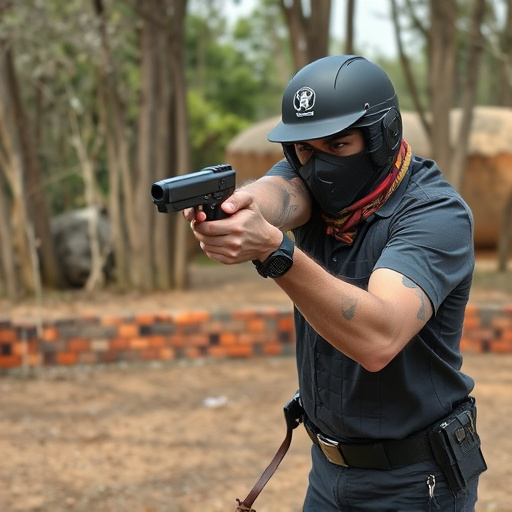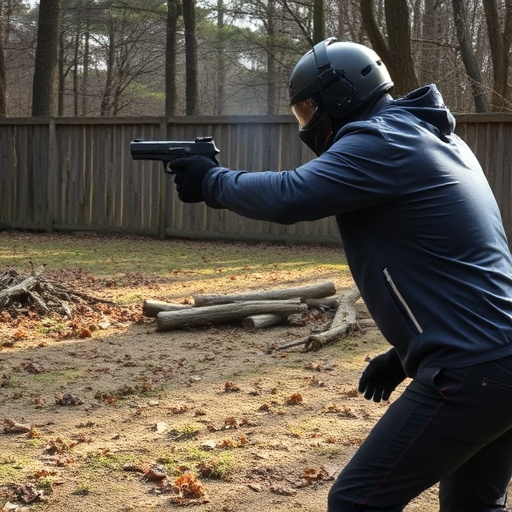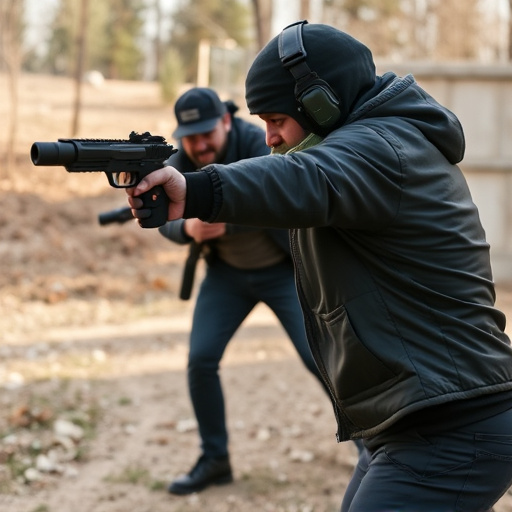Tasers, or stun guns, are non-lethal tools that temporarily paralyze targets with high-voltage electrical pulses, offering crucial seconds to minutes of immobilization for self-defense. Effectiveness depends on model, target factors, and legal regulations varying globally. "Best value" stun guns balance power, features, and cost while adhering to local laws regarding output and use. Proper training and safety precautions maximize their potential as powerful self-defense tools.
“The impact of Taser deployment on paralysis duration is a complex topic that demands scrutiny, especially in the context of self-defense. This article delves into the factors behind the time individuals remain paralyzed after a stun gun’s use, offering insights into what makes certain instances longer or shorter.
We’ll explore understanding Taser effects, from the initial shock to recovery times, and discuss legal ramifications, emphasizing the importance of responsible usage. Additionally, we’ll guide readers through choosing the best value self-defense stun gun and highlight crucial training and safety measures for effective, safe deployment.”
- Understanding Taser Deployment and Its Effects
- Factors Influencing Paralysis Duration
- Legal Considerations for Stun Gun Use
- Choosing the Best Value Self-Defense Stun Gun
- Training and Safety Precautions for Effective Use
Understanding Taser Deployment and Its Effects

Taser deployment, a powerful tool for law enforcement and self-defense enthusiasts alike, involves the use of an electric pulse to temporarily paralyze a target. This technology has gained popularity as a non-lethal option for self-defense, offering individuals a way to protect themselves while minimizing harm. The effects of a Taser are swift, causing muscle contractions and leading to a loss of balance and mobility. This rapid response makes it an effective tool to disable an attacker, providing users with precious time to escape or summon help.
When considering the best value stun gun for self-defense, understanding how Tasers work is crucial. These devices deliver a high-voltage, low-current electrical discharge, which can incapacitate individuals without causing permanent damage. The duration of paralysis varies depending on factors such as the model of Taser, the proximity of the target to the device, and the individual’s overall health. For self-defense purposes, knowing that even a brief period of immobilization—typically lasting from a few seconds to several minutes—can be enough to escape a dangerous situation is invaluable.
Factors Influencing Paralysis Duration

The duration of paralysis caused by a taser can vary greatly and is influenced by several factors. One of the primary considerations is the model and power output of the stun gun. Modern best value stun guns designed for self-defense often have advanced features that deliver more controlled and powerful shocks, potentially extending the immobilization period.
Additional variables include the target’s body type, physical fitness, and reaction time. Larger individuals may require a longer shock duration to achieve the same level of paralysis as someone smaller, due to differing muscle mass and nerve density. Similarly, someone in excellent physical condition might recover more quickly from the effect, reducing the overall paralysis duration.
Legal Considerations for Stun Gun Use

The legal landscape surrounding stun gun deployment varies widely across jurisdictions, and understanding these considerations is paramount for both users and law enforcement. In many regions, stun guns are categorized as less-lethal or non-lethal weapons, regulated separately from firearms. This distinction often affects the duration of paralysis they can induce—a factor crucial in self-defense scenarios. The “best value” for a stun gun in terms of self-defense extends beyond its power output; it encompasses its reliability, ease of use, and legal standing.
When deployed correctly, stun guns are designed to disable an assailant temporarily, providing users with an opportunity to escape. However, the length of this disability period can be a point of contention in legal cases. Courts often scrutinize factors like training, the intensity of the shock, and the specific circumstances under which the weapon was used. Therefore, individuals considering stun guns as a self-defense mechanism must stay informed about local laws to ensure they act within their rights while maximizing the best value for their safety.
Choosing the Best Value Self-Defense Stun Gun

When considering a stun gun for self-defense, choosing the best value option involves balancing effectiveness, features, and price. Look for models with a powerful electrical output (typically measured in millions of volts) to ensure it can incapacitate an assailant. Additional features like a durable build, a compact design, and a reliable trigger mechanism enhance usability and reliability.
The best value stun gun self-defense option should also offer various safety features, such as an automatic shut-off function to prevent accidental activation and a light or alarm to deter attackers. Consider models with adjustable output levels, allowing you to conserve battery life for longer use or increase intensity when needed. Research different brands and read customer reviews to ensure you get a quality product that meets your needs without breaking the bank.
Training and Safety Precautions for Effective Use

The effective deployment of a taser, or stun gun, requires proper training and safety precautions to ensure its optimal use and maximize its benefits as a self-defense tool. Law enforcement agencies and civilians alike should undergo comprehensive training programs that cover not just the technical aspects of taser operation but also strategic planning and de-escalation techniques. Understanding when and how to deploy a taser is crucial for minimizing potential risks and ensuring its best value as a non-lethal force option.
Safety precautions include familiarizing oneself with local laws and regulations regarding stun gun ownership and use, maintaining proper maintenance of the device, and practicing responsible handling and storage. Additionally, understanding the physical limitations and effects of taser deployment, such as the duration of paralysis, is essential for users to make informed decisions in high-stress situations. This knowledge enables individuals to use the taser effectively while adhering to safety protocols, ultimately enhancing their self-defense capabilities and promoting public safety.
Taser deployment can lead to temporary paralysis, with duration varying based on several factors. Understanding these influences is crucial for both users and legal authorities. When considering a best value stun gun for self-defense, it’s essential to prioritize safety features and proper training. By adhering to legal guidelines and employing effective techniques, individuals can ensure the responsible use of stun guns, enhancing personal safety without prolonging unwanted paralyses.
